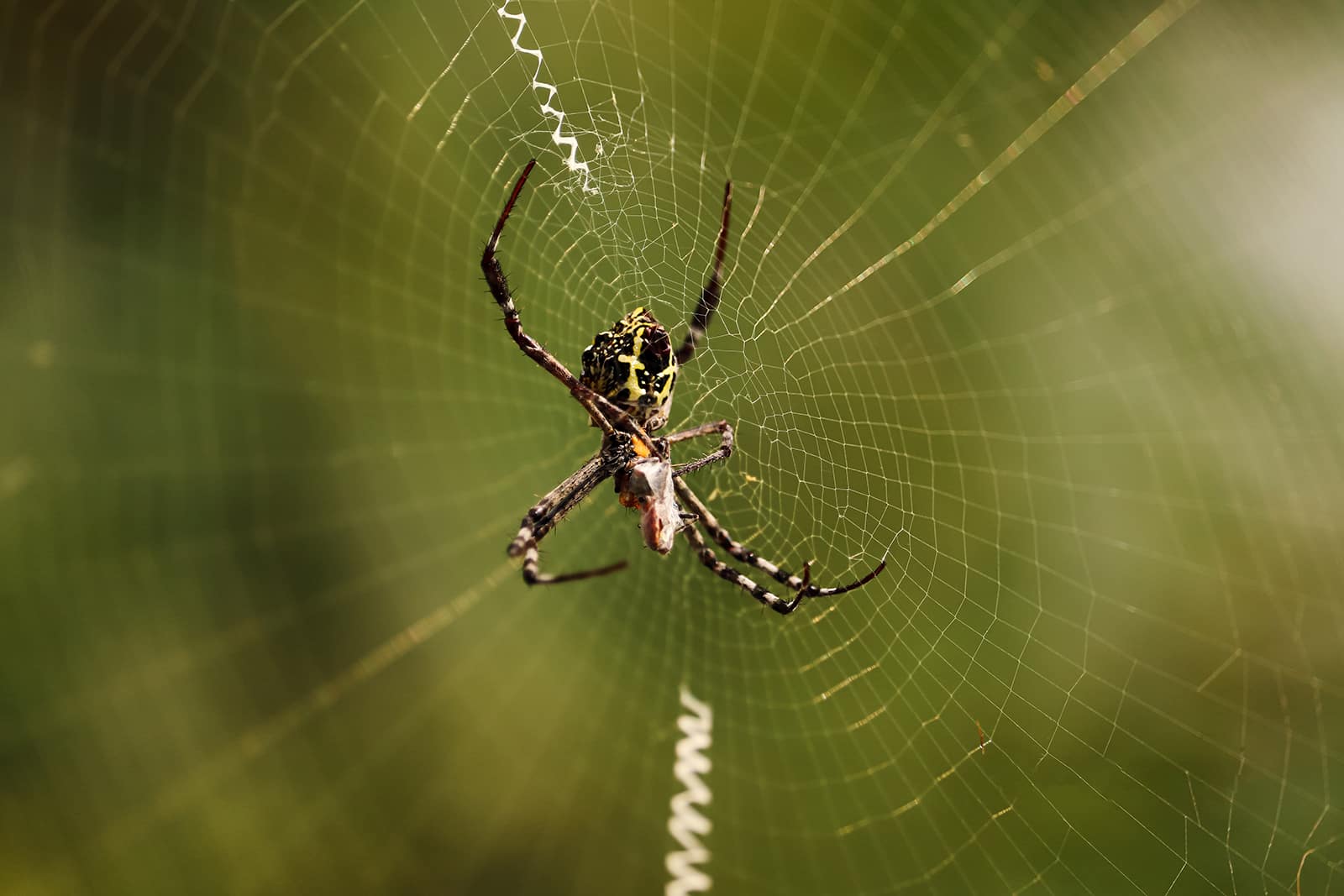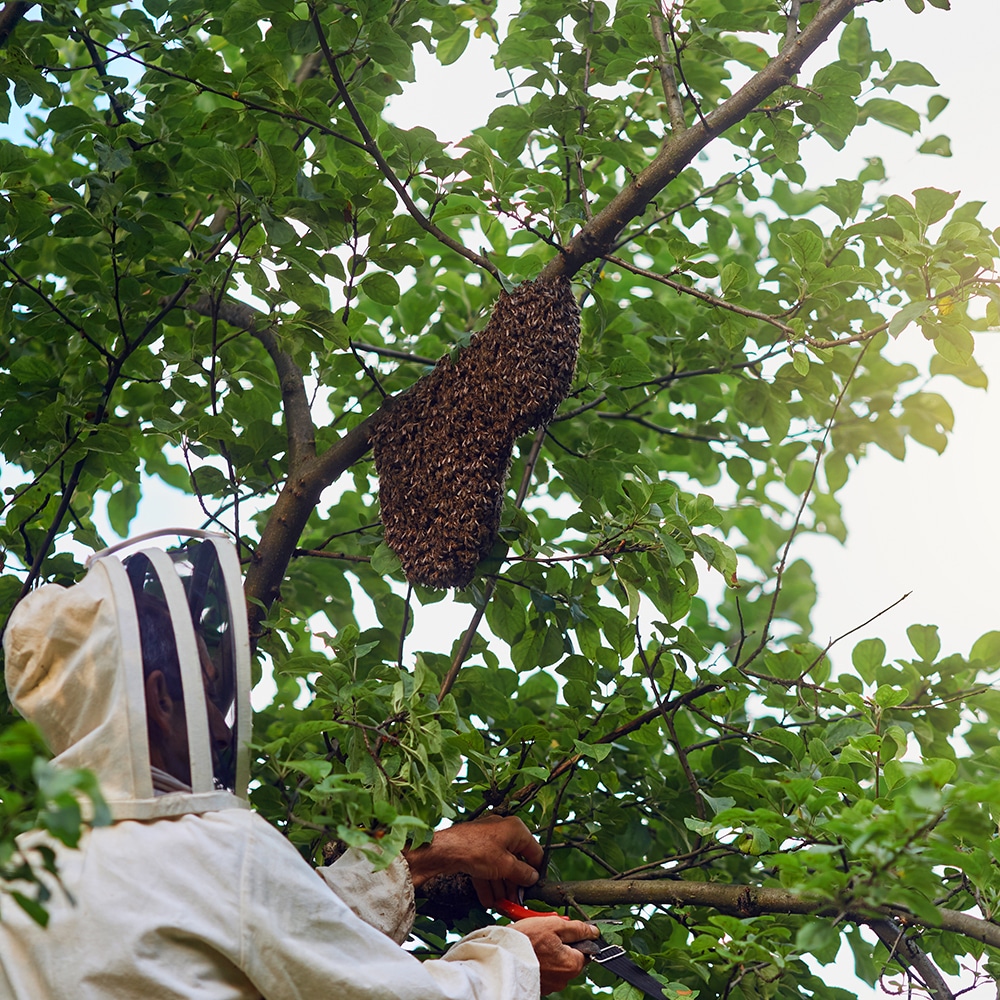
Why Do Spiders Come Back And Why
Why Do Spiders Come Back And Why On The Central Coast NSW. Responsive Proactive Solutions. Detail-focused for lasting results. Call Adam on 0431 222 894
Fleas in your outdoor spaces can be a real nuisance, especially on the Central Coast NSW. Understanding how to get rid of fleas in your outdoor spaces is crucial. At Vital Pest Control, we offer reliable and trustworthy advice. Here’s how you can tackle this pesky problem effectively.
How Fleas Spread in Outdoor Areas
Fleas thrive in damp, warm environments. Pets and wildlife often carry them into yards. They jump from host to host, quickly infesting lawns and gardens.
Best Outdoor Flea Sprays and Treatments
Use quality flea sprays to kill fleas on contact. Choose products designed for outdoor use, ensuring they target larvae and adults. Fast and responsive action is crucial.
How to Treat Flea-Infested Lawns
Regular lawn maintenance helps. Mow grass short and remove debris. Apply granular flea treatments for lasting protection.
How to Prevent Fleas from Returning to Your Yard
Consistency is key. Regularly treat outdoor areas and maintain cleanliness. Ensure your pets are flea-free to prevent re-infestation.
Why Shaded Areas Attract Fleas
Fleas prefer cool, moist spots. Shaded areas provide the perfect environment. Keep these zones dry and well-maintained.
How to Use Diatomaceous Earth for Flea Control
Sprinkle diatomaceous earth in affected areas. It’s a natural option that dehydrates fleas. Reapply after rain for continuous effectiveness.
How to Keep Wildlife from Bringing Fleas
Limit wildlife access by securing bins and removing food sources. Use deterrents like motion-activated lights or sprinklers.
The Best Landscaping Methods to Prevent Fleas
Opt for minimal ground cover and regularly trim vegetation. This reduces flea habitats. Quality over quantity is the mantra for landscaping.
For expert advice and solutions, discover how we can help you today!

Fleas are a common nuisance in many outdoor areas, especially in Central Coast NSW. Understanding how fleas spread in these spaces is crucial for effective pest control. The spread of fleas often begins with animals, as they are the main carriers. Once they latch onto a host, fleas can quickly infest surrounding areas, making it essential to know their behaviour and habitats.
Animal Hosts and Movement
Fleas thrive by hitching rides on wild animals like possums, rodents, and even domestic pets. These hosts travel through various outdoor areas, dropping fleas along the way. Each time an animal rests or brushes past plants, fleas may leap off, looking for new hosts or laying eggs. This movement spreads fleas rapidly across gardens, parks, and backyards. Monitoring animal activity can help manage flea infestations.
Environmental Conditions
Fleas prefer warm, humid environments, making Central Coast NSW ideal for their proliferation. These pests hide in shaded, moist spots like under trees or in dense foliage. Such conditions allow fleas to thrive unnoticed until they find a new host. Regularly maintaining garden areas by trimming plants and reducing moisture can disrupt flea habitats, limiting their spread.
Human Activity and Pet Interaction
Humans and pets inadvertently contribute to the spread of fleas. Visiting infested areas or allowing pets to roam freely increases the risk of bringing fleas back home. Once inside, fleas can breed and expand their territory. To prevent this, it’s essential to treat pets regularly with flea control products and keep outdoor spaces tidy and clean.
When dealing with flea infestations on the Central Coast, NSW, finding the right outdoor flea sprays and treatments is crucial for effective pest control. The warm, humid climate provides an ideal environment for fleas to thrive, making it essential to choose products that target these pesky pests effectively.
Understanding Flea Behaviour
Fleas are notorious for hiding in shaded, moist areas such as gardens and lawns. Understanding their behaviour is essential for selecting the best treatment. Look for sprays that penetrate the soil, reaching fleas at all stages of their lifecycle. This ensures comprehensive control and prevents future infestations.
Choosing the Right Products
Opt for outdoor flea sprays specifically formulated for use in gardens and yards. These products often contain insect growth regulators (IGRs) that halt flea development. Check for sprays that offer long-lasting protection and are safe for pets and children, ensuring peace of mind while effectively reducing flea populations.
Application Techniques
Proper application is key to maximising the effectiveness of flea treatments. Follow instructions carefully and spray during cooler parts of the day to prevent rapid evaporation. Focus on areas where pets spend time, as these are common hotspots for flea activity. Regular treatment helps maintain a flea-free environment.
Fleas can turn your peaceful lawn into a battleground, especially in the lush landscapes of the Central Coast NSW. Addressing a flea infestation requires a strategic approach to protect your outdoor spaces and ensure family and pet safety. Vital Pest Control offers guidance on effectively treating flea-infested lawns.
Identify the Infestation
Begin by confirming the presence of fleas. Walk through your lawn wearing white socks; fleas will jump on and be easily visible against the fabric. Check areas where your pets frequent, as these spots often harbour the most fleas. Knowing the extent of the problem helps in selecting the right treatment method.
Choose the Right Treatment
Select a treatment that suits your lawn and environmental concerns. Options include natural remedies like diatomaceous earth or chemical treatments specifically formulated for fleas. If opting for chemicals, ensure they are safe for pets and children. Consider professional pest control services for severe infestations to ensure a thorough approach.
Maintain Your Lawn
Regular lawn maintenance helps prevent flea infestations. Mow the lawn frequently to reduce hiding spots. Remove debris and excess foliage that can shelter fleas. Watering the lawn can also drown fleas and disrupt their life cycle. Consistent maintenance keeps your outdoor space less inviting to fleas.
Fleas can be a persistent problem in your yard, especially on the Central Coast NSW. To keep these pesky insects at bay, it’s crucial to adopt preventive measures. Consistent maintenance not only ensures a pleasant outdoor space but also protects your pets and family from flea infestations.
Mow Regularly and Trim Vegetation
Keeping your grass short and vegetation well-trimmed is vital. Fleas love tall grass and dense shrubs as they provide shelter and humidity. Regular mowing and trimming reduce these hiding spots, making your yard less inviting for fleas. Make sure to dispose of clippings promptly to further eliminate potential habitats.
Reduce Moisture in Your Yard
Fleas thrive in moist environments. Fix any leaks and ensure proper drainage to keep your yard dry. Consider using gravel or mulch in areas prone to dampness. By reducing moisture, you create an inhospitable environment for fleas, helping to prevent their return.
Introduce Natural Predators
Encouraging natural flea predators, like certain birds or beneficial insects, can help control flea populations. Set up bird feeders to attract birds that feed on insects. This natural method can be an eco-friendly way to maintain a flea-free yard.
Implementing these strategies will help keep your yard free from fleas, ensuring a safe and enjoyable outdoor space for everyone. Consistency is key, so make these practices part of your routine maintenance.
Fleas thrive in shaded areas, making them a common nuisance in many gardens on the Central Coast, NSW. Understanding why these pests prefer shade is crucial for effective flea control. Fleas are tiny insects that rely on favourable conditions to survive and reproduce. Shady spots provide these ideal conditions, making it essential to address them when planning pest control strategies.
Temperature Regulation
Fleas struggle with extreme temperatures. Shaded areas offer a cooler environment, which protects them from the harsh Australian sun. This cooler habitat allows fleas to remain active throughout the day, increasing their chances of finding hosts. By targeting these cooler spots, you can disrupt their life cycle effectively.
Humidity Retention
Humidity plays a vital role in flea survival. Shaded areas often retain more moisture, creating a humid microclimate. This humidity is crucial for flea eggs and larvae to mature. Without enough moisture, their development slows, reducing flea infestations over time. Addressing these humid zones can significantly impact flea populations.
Presence of Hosts
Pets and wildlife often rest in shaded areas, making them prime locations for fleas to find hosts. Fleas are opportunistic and will quickly latch onto any animal that passes by. Reducing flea-friendly zones in your garden can help protect your pets and reduce flea numbers altogether.
Diatomaceous earth is a natural and effective solution for controlling fleas, especially in outdoor areas. This fine powder, composed of fossilised remains of tiny aquatic organisms, is both eco-friendly and non-toxic to humans and pets when used correctly. Applying diatomaceous earth can disrupt the flea life cycle, making it a valuable tool in pest management strategies on the Central Coast of NSW.
Understanding Diatomaceous Earth
Diatomaceous earth works by dehydrating fleas. The powder’s microscopic sharp edges cut through the flea’s exoskeleton, leading to desiccation. It’s essential to use food-grade diatomaceous earth to ensure safety for pets and humans. When scattered in areas where fleas are prevalent, it acts as a physical barrier, reducing flea populations over time.
Application Techniques
Before applying, ensure the affected area is dry since moisture reduces effectiveness. Sprinkle the powder lightly where fleas are likely to dwell, such as in garden beds, around pet sleeping areas, and along pathways. Use a dust spreader for even distribution. Avoid over-application as a thick layer is less effective.
Precautions and Safety
While diatomaceous earth is safe, avoid inhaling the powder during application. Consider wearing a mask and gloves for protection. Keep pets and children away from treated areas until the dust settles. Regularly reapply after rain or heavy dew to maintain efficacy since moisture can wash it away.
Fleas can become a real nuisance, especially when wildlife brings them into your outdoor spaces. On the Central Coast NSW, keeping wildlife from introducing fleas is essential for maintaining a comfortable environment. Here’s how you can effectively deter wildlife and keep fleas at bay.
Secure Food Sources
Wildlife often enters yards in search of food. Ensure rubbish bins are tightly sealed and avoid leaving pet food outside. This reduces the likelihood of attracting unwelcome visitors that could carry fleas. Consider bird feeders that minimise spillage, as seeds on the ground can draw in wildlife.
Maintain Your Yard
A tidy yard naturally deters wildlife. Trim overgrown bushes and clean up debris where animals might hide or nest. Regular mowing also helps by disrupting flea habitats in tall grass. Keep woodpiles elevated to prevent them from becoming shelters for small animals.
Install Barriers
Fencing is an effective way to keep larger wildlife out. Ensure fences are high and sturdy enough to withstand climbing or burrowing animals. If possible, install netting over garden areas to protect plants and deter smaller creatures from entering.
Use Natural Repellents
Consider using natural deterrents such as citrus peels or certain essential oils. These can be placed around garden beds and entry points. Many animals find these scents off-putting, reducing the chance of them bringing fleas into your space.
Fleas can quickly become a problem in outdoor spaces, especially in areas like the Central Coast of NSW where the climate is ideal for them. Vital Pest Control offers insights into effective landscaping methods to deter these pests. By incorporating certain landscaping strategies, you can minimise flea infestations and enjoy a pest-free garden.
Maintain a Clean Yard
Regularly mowing the lawn and trimming bushes can reduce flea habitats. Fleas thrive in tall grass and unkempt bushes, so keeping your yard tidy helps eliminate their breeding grounds. Remove any debris, such as leaves or twigs, where fleas might hide.
Choose Flea-Repelling Plants
Planting herbs like rosemary and lavender can naturally deter fleas. These plants emit scents that fleas dislike, making them a great addition to your garden. Strategically placing them around the yard can create a natural barrier against fleas.
Consider Mulch Alternatives
While mulch is popular for landscaping, it can harbour fleas. Instead, use cedar chips, which are known to repel fleas due to their natural oils. Spreading cedar chips around flower beds and garden paths can help reduce flea populations.
Create a Barrier
Installing gravel or stone pathways can act as physical barriers, preventing fleas from spreading. These materials are less inviting to fleas compared to grass or soil, making it harder for them to move around your yard.
Fleas can be a nuisance, especially when they invade your garden beds. These tiny pests not only irritate pets but also create discomfort for anyone enjoying the outdoors. On the Central Coast of NSW, managing fleas in garden spaces is crucial for maintaining a pleasant environment. Here’s how you can tackle this issue effectively.
Identify Flea Hotspots
Before taking action, it’s essential to pinpoint the areas where fleas are most prevalent. Look for signs of flea activity around garden beds, particularly in shaded and damp areas. These conditions often provide a conducive environment for fleas to thrive. Observing these hotspots will help target treatment efforts efficiently.
Natural Remedies and Treatments
Using natural solutions can be an effective way to manage fleas without harsh chemicals. Diatomaceous earth, a powdery substance, can be sprinkled around garden beds. This natural remedy dehydrates and kills fleas on contact. Planting flea-repelling herbs like lavender or rosemary can also deter fleas while enhancing garden aesthetics.
Maintain Garden Hygiene
Regular garden maintenance can significantly reduce flea populations. Keep garden beds free of debris and ensure lawns are mowed regularly. Removing organic matter where fleas can hide limits their breeding grounds. Consistent upkeep can prevent flea infestations from taking hold in your garden.
Many residents on the Central Coast NSW face the persistent issue of fleas in outdoor spaces. While chemical treatments are a common solution, some homeowners seek natural alternatives. One such option is the use of flea repellent plants. But do these plants effectively keep fleas at bay? Understanding their role can help you make informed decisions for Vital Pest Control.
Understanding Flea Repellent Plants
Certain plants are known for their flea repelling properties. These plants, like lavender, mint, and rosemary, release natural oils that deter fleas. When strategically placed in gardens or outdoor areas, they can create a barrier that discourages fleas from settling. However, it’s essential to know that their effectiveness can vary based on the environment and flea population.
Flea Repellent Plants vs. Chemical Treatments
While flea repellent plants offer a natural method to control fleas, they may not be as potent as chemical treatments. For significant infestations, combining these plants with professional pest control can enhance results. Vital Pest Control provides solutions that can complement natural methods, ensuring a thorough approach to flea management.
Integrating Plants into Your Pest Control Strategy
Using flea repellent plants as part of your pest control strategy on the Central Coast can be beneficial. Start by planting them in high-traffic areas where pets frequent. Regular maintenance and strategic planting can enhance their effectiveness. By integrating these plants, you create a more comprehensive approach to managing fleas in your outdoor spaces.
Fleas can quickly become a nuisance, turning your peaceful home into a battleground. Vital Pest Control on the Central Coast NSW knows the importance of stopping these pests before they enter your home. By focusing on outdoor spaces, you can prevent fleas from hitching a ride indoors.
Maintain the Yard
Regular yard maintenance is crucial. Mow the grass frequently and trim bushes to reduce flea habitats. Fleas thrive in shaded, moist areas, so keeping your yard tidy limits their breeding grounds. Removing leaf litter and debris also helps eliminate hiding spots for these pests.
Create a Barrier
Establishing a barrier between your yard and home is another effective strategy. Use cedar chips or diatomaceous earth around entry points and along the perimeter. These natural substances deter fleas and can help stop them in their tracks. Regularly refresh these barriers for continued protection.
Use Flea Treatments
Applying flea treatments to pets is essential. Fleas often enter homes on animals. Speak with your vet about suitable topical treatments or oral medications. These treatments not only protect your pets but also reduce the chance of fleas entering your home.
Fleas can be a relentless nuisance, especially in the lush landscapes of the Central Coast NSW. To effectively tackle these pests, outdoor flea traps can be a lifesaver. These ingenious devices lure fleas away from your beloved garden and pets, providing a safer play area for everyone. Here’s how to make the most of flea traps outdoors.
Choosing the Right Flea Trap
When selecting a flea trap, consider the size of your outdoor area. Larger spaces benefit from traps with stronger attractants, often powered by electricity or solar. These traps mimic warm-blooded hosts, drawing fleas in with heat and light. Look for traps with sticky pads that capture fleas efficiently. Opt for traps that are weather-resistant to endure the Central Coast’s variable climate.
Strategic Placement for Maximum Effectiveness
Position flea traps in shaded, moist areas where fleas thrive. Gardens, under decks, and near pet zones are hotspots. Avoid placing traps in direct sunlight, as this can reduce their effectiveness. Regularly move traps to different locations to cover a broader area and prevent fleas from establishing new colonies.
Maintenance and Monitoring
Check flea traps frequently to assess their effectiveness. Replace sticky pads when they become full to maintain trapping efficiency. Monitoring traps helps track flea activity and adjust your pest control strategy as needed. Consistent maintenance ensures your outdoor spaces remain flea-free, allowing you to enjoy the beautiful Central Coast environment without worry.
Fleas can turn your outdoor spaces into a nuisance, especially during warm months. For those living on the Central Coast NSW, finding natural flea control solutions is essential for a harmonious yard. With an emphasis on environmentally friendly methods, these solutions not only protect your family and pets but also preserve the local ecosystem. Read on to explore the best natural ways to keep fleas at bay.
Utilise Beneficial Nematodes
Beneficial nematodes are microscopic worms that naturally control flea populations. They actively hunt and destroy flea larvae in the soil, interrupting the life cycle and preventing infestations. These nematodes are safe for pets and humans, making them an ideal choice for natural pest control. Simply spray them onto your lawn and let nature do the work.
Embrace Essential Oils
Essential oils, such as lavender and eucalyptus, offer a natural flea deterrent. Fleas dislike the scent and oils can be mixed with water to create a simple spray for your garden. Spritz areas where fleas are common, like near pet resting spots. Ensure oils are diluted properly to avoid harming plants or pets.
Maintain a Clean Yard
Regularly raking leaves and trimming grass helps reduce flea habitats. Fleas thrive in damp, shaded areas with debris. By keeping your yard tidy, you minimise these environments, making it less inviting for fleas. Consistent yard maintenance is a simple yet powerful tool in flea control.
Fleas can be a persistent problem, especially in the lush, inviting outdoor spaces of the Central Coast, NSW. While DIY methods might offer temporary relief, sometimes the infestation demands expert intervention. Knowing when to hire professional flea exterminators can save time, money, and hassle.
Signs of a Severe Infestation
If you notice fleas everywhere—on your pets, in your garden, and even in your home—it’s time to call the pros. Fleas multiply quickly and can soon become overwhelming. Professional exterminators use specialised treatments to tackle severe infestations effectively, ensuring every stage of the flea lifecycle is addressed.
Recurring Flea Problems
Repeated infestations signal that your DIY methods might not be cutting it. Fleas are resilient pests, and a consistent problem might indicate underlying issues like nests nearby. Experts have the tools and knowledge to identify and tackle these root causes, providing a more permanent solution.
Health Concerns and Allergies
Fleas are more than just an annoyance. They can pose health risks to pets and humans, including allergic reactions and diseases. If bites lead to severe itching or allergic responses, professional help becomes crucial. Exterminators can offer treatments that are both effective and safe for your family and pets.
Eliminating fleas outside can be a challenging task, especially on the Central Coast NSW, where the climate can favour their rapid reproduction. Understanding the timeline for eradicating fleas is crucial for any effective pest control strategy. Vital Pest Control offers insights into how long this process may take, ensuring a flea-free outdoor space.
Factors Influencing Flea Elimination
Several factors impact how quickly you can eliminate fleas. The extent of the infestation, the climate, and the specific treatments used all play a role. For instance, warmer weather can speed up the flea life cycle, making it essential to act swiftly. Additionally, using the right combination of treatments can significantly shorten the elimination period.
Effective Treatment Methods
Vital Pest Control employs various methods to tackle fleas outdoors. These include using environmentally friendly insecticides, introducing natural predators, and maintaining regular lawn care. A thorough approach ensures that fleas are not just removed but also kept at bay in the future. Consistency in treatment often results in noticeable improvements within a few weeks.
Expected Timeline
Generally, it takes about three to six weeks to see significant results in flea reduction. This timeline can vary based on the severity of the infestation and the diligence of the treatment plan. Regular monitoring and follow-up treatments are key to ensuring long-term success in keeping your outdoor spaces flea-free.
Please leave your details in the form and we will call you back the same day.
So that we can process your enquire efficiently please leave as many details as possible and upload any relevant images. (.jpg and .png format)

Why Do Spiders Come Back And Why On The Central Coast NSW. Responsive Proactive Solutions. Detail-focused for lasting results. Call Adam on 0431 222 894

Building a Long Term Residential Pest Protection Plan For Home Owners On The Central Coast NSW. Responsive Proactive Solutions. Detail-focused for lasting results. Call Adam on 0431 222 894

How to Protect Your Home from Wasp Infestations On The Central Coast NSW. Responsive Proactive Solutions. Detail-focused for lasting results. Call Adam on 0431 222 894